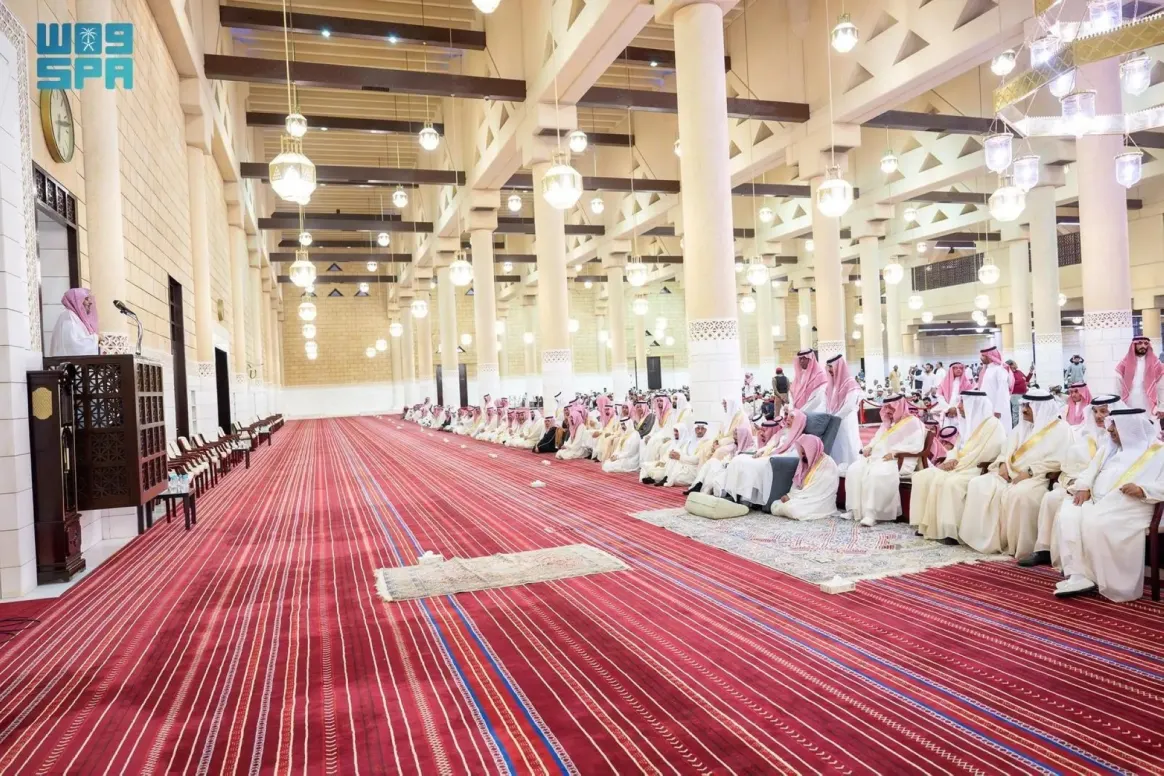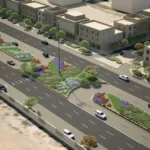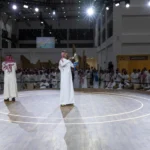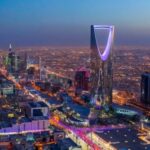Holiday prayer grounds and mosques across various regions of the Kingdom have been prepared for Eid al-Adha prayers today (Friday). The prayers will be held 15 minutes after sunrise according to the Umm al-Qura calendar.
Speakers and support services have been set up, with field teams assigned to monitor readiness. A comprehensive plan for Eid prayers has been established by the Ministry of Islamic Affairs.
The Eid al-Adha prayer times for the year 1446 in some regions of the Kingdom are as follows: in Makkah at (05:52), Madinah at (05:47), Riyadh at (05:18), Dammam at (05:01), Abha at (05:48), Buraidah at (05:25), and Hail at (05:32).
In Al-Baha, prayers will be held at (05:48), Najran at (05:42), Jazan at (05:50), Tabuk at (05:50), Sakaka at (05:32), and Arar at (05:32).
Holiday prayer grounds
Holiday prayer grounds, often known as *Eidgah* or *Musalla*, are open-air spaces designated for Muslims to perform special congregational prayers during Islamic festivals like Eid al-Fitr and Eid al-Adha. These grounds have historical significance in many Muslim-majority regions, serving as communal gathering places since the early days of Islam. They are typically large, simple areas, sometimes marked by a *minbar* (pulpit) or a *mihrab* (prayer niche), emphasizing unity and inclusivity in worship.
mosques
Mosques are places of worship for Muslims, serving as centers for prayer, community gatherings, and religious education. Historically, the first mosque was established by the Prophet Muhammad in Medina in the 7th century, and since then, mosques have evolved architecturally and culturally across the Islamic world. Notable examples include the Masjid al-Haram in Mecca, the holiest site in Islam, and the Blue Mosque in Istanbul, reflecting diverse artistic and regional influences.
Umm al-Qura calendar
The **Umm al-Qura calendar** is the official Islamic calendar used in Saudi Arabia, based on lunar calculations to determine important religious dates, such as Ramadan and Hajj. Established in the 20th century, it replaced regional moon-sighting practices with a standardized system for administrative and religious purposes. The calendar is named after **Umm al-Qura** (“Mother of All Settlements”), an ancient name for Mecca, reflecting its deep connection to Islamic tradition.
Ministry of Islamic Affairs
The Ministry of Islamic Affairs is a government body in many Muslim-majority countries responsible for overseeing religious matters, including mosques, Islamic education, and religious guidance. It often plays a key role in promoting Islamic values, organizing Hajj pilgrimages, and issuing fatwas (religious rulings). Established to regulate and support Islamic practices, its history varies by country but generally aligns with the modernization of state governance in the 20th century.
Makkah
Mecca (Makkah) is the holiest city in Islam, located in Saudi Arabia, and is the birthplace of the Prophet Muhammad. It is home to the Kaaba, the sacred cube-shaped structure at the center of the Masjid al-Haram (Grand Mosque), which Muslims face during prayer and visit during the annual Hajj pilgrimage. Mecca has been a religious center since pre-Islamic times, but its significance deepened with the rise of Islam in the 7th century, becoming the spiritual heart of the Muslim world.
Madinah
Madinah, also known as Medina, is a holy city in Saudi Arabia and the second holiest site in Islam after Makkah. It is where the Prophet Muhammad migrated in 622 CE (the Hijra), establishing the first Muslim community and the Islamic calendar. The city is home to Al-Masjid an-Nabawi (the Prophet’s Mosque), which contains Muhammad’s tomb and is a major pilgrimage site for Muslims worldwide.
Riyadh
Riyadh is the capital and largest city of Saudi Arabia, located in the heart of the Arabian Peninsula. Historically a fortified oasis and trading hub, it became the center of the First Saudi State in the 18th century and later the capital of modern Saudi Arabia after its unification in 1932. Today, it is a bustling metropolis blending modern skyscrapers with historic sites like Masmak Fortress, symbolizing the country’s rapid development and deep-rooted heritage.
Dammam
Dammam is a major city in Saudi Arabia’s Eastern Province, serving as a key administrative and economic hub. It grew rapidly after the discovery of oil in the 1930s, transforming from a small fishing village into a modern urban center. Today, Dammam is part of the Dammam Metropolitan Area, which includes Dhahran and Al Khobar, and is known for its port, commercial districts, and proximity to the iconic King Fahd Causeway linking Saudi Arabia to Bahrain.






